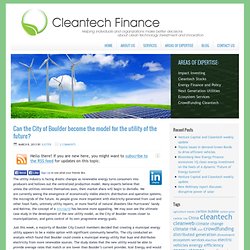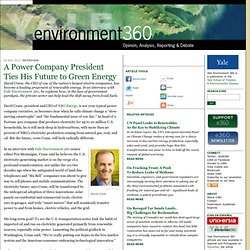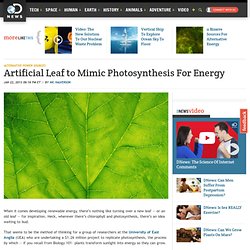

Can the City of Boulder become the model for the utility of the future? - Cleantech Finance. The utility industry is facing drastic changes as renewable energy turns consumers into producers and hollows out the centralized production model.

Many experts believe that unless the utilities reinvent themselves soon, their market share will begin to dwindle. We are currently seeing the emergence of economically viable electric distribution and operation systems, the microgrids of the future. Xcel Energy - Boulder Municipalization. November 6, 2013 Boulder voters have made it clear they want solid numbers and responsible spending when it comes to the city’s push for municipalization.

Xcel Energy has always supported people knowing the cost of municipalization and having a say on whether the effort moves forward. The approval of this measure shows that Boulder customers are giving serious thought to how much debt they are willing to incur in this effort as they are giving city leaders more guidance in spending Boulder voters know more today about the costs and risks of municipalization than they did six months ago.
Your Boulder Energy. Amory Lovins: What You Need to Know About Blackouts. Electricity is the lifeblood of modern society.

It runs practically everything — except when it doesn’t. The regional blackouts that roll across America and other industrial nations about once a decade are getting costlier. A Power Company President Ties His Future to Green Energy by. 09 Nov 2011: Interview David Crane, president and CEO of NRG Energy, is not your typical power company executive, as becomes clear when he calls climate change a “slow-moving catastrophe” and “the fundamental issue of our day.”

As head of a Fortune 500 company that produces electricity for up to 20 million U.S. households, he is still neck-deep in hydrocarbons, with more than 90 percent of NRG’s electricity production coming from natural gas, coal, and oil. But the future, vows Crane, will look radically different. NRG Energy David Crane In an interview with Yale Environment 360 senior editor Fen Montaigne, Crane said he believes the U.S. electricity-generating market is on the verge of a profound transformation, not unlike the era two decades ago when the antiquated world of land-line telephones and “Ma Bell” companies was about to give way to cell phones and mobile communications.
His long-term goal? Electric car. Crane: It’s about energy market share. View photos.
Inside.mines.edu/UserFiles/File/economicsBusiness/ETM/2011-08-30 So You Want to be an Entrepreneur.pdf. How Fuel Cells Work" The fuel cell will compete with many other energy conversion devices, including the gas turbine in your city's power plant, the gasoline engine in your car and the battery in your laptop.

Combustion engines like the turbine and the gasoline engine burn fuels and use the pressure created by the expansion of the gases to do mechanical work. Batteries convert chemical energy back into electrical energy when needed. Fuel cells should do both tasks more efficiently. A fuel cell provides a DC (direct current) voltage that can be used to power motors, lights or any number of electrical appliances. There are several different types of fuel cells, each using a different chemistry. Polymer exchange membrane fuel cell (PEMFC) Creating energy from light and air – new research on biofuel cells. The aim of the research long-term is to develop more efficient biofuel cells, seen as the future of electronics.

Because biofuel cells are powered by readily available biological materials, they have the potential to be used indefinitely when electricity is required at places where is it not possible to replace a battery or recharge them. Most biofuel cells create electricity using enzymes that process glucose, but the Leeds research will focus on bacterial enzymes that can harness light or hydrogen gas to create energy. The work is funded by a £1.42m grant from the European Research Council. Lead researcher, Dr Lars Jeuken, from the University's Faculty of Biological Sciences, says: "Technology that creates an electrical signal from a biochemical reaction is already in commercial use, for example in blood glucose biosensors. However, developing an efficient biofuel cell that can create sufficient electricity for general use has proved much more difficult.
Artificial Leaf to Mimic Photosynthesis For Energy. When it comes developing renewable energy, there’s nothing like turning over a new leaf — or an old leaf — for inspiration.

Heck, wherever there’s chlorophyll and photosynthesis, there’s an idea waiting to bud. That seems to be the method of thinking for a group of researchers at the University of East Anglia (UEA) who are undertaking a $1.26 million project to replicate photosynthesis, the process by which — if you recall from Biology 101– plants transform sunlight into energy so they can grow. PHOTOS: 10 Bizarre Sources for Alternative Energy Lead by researcher and professor Julea Butt, the project aims to create hydrogen to be used as zero-emission car fuel or converted into green energy. “We will build a system for artificial photosynthesis by placing tiny solar-panels on microbes,” Butt said in a UEA press release. BLOG: Japan To Replace Nuke Plant With Wind Farm “Many renewable energy supplies, such as sunlight, wind and the waves, remain largely untapped resources,” Butt said.